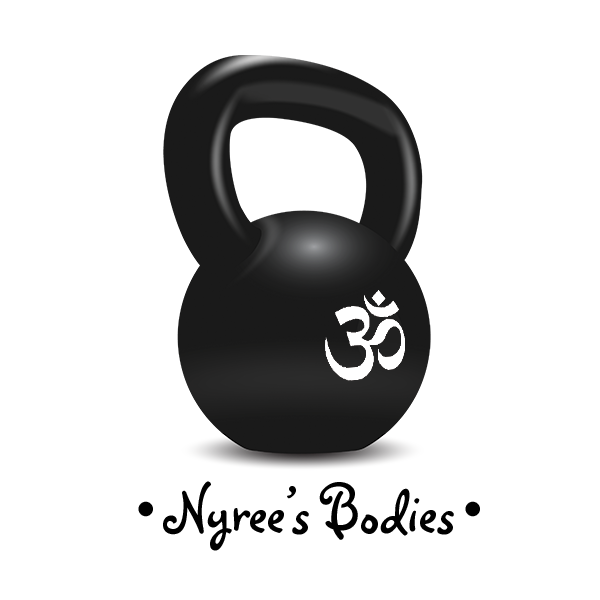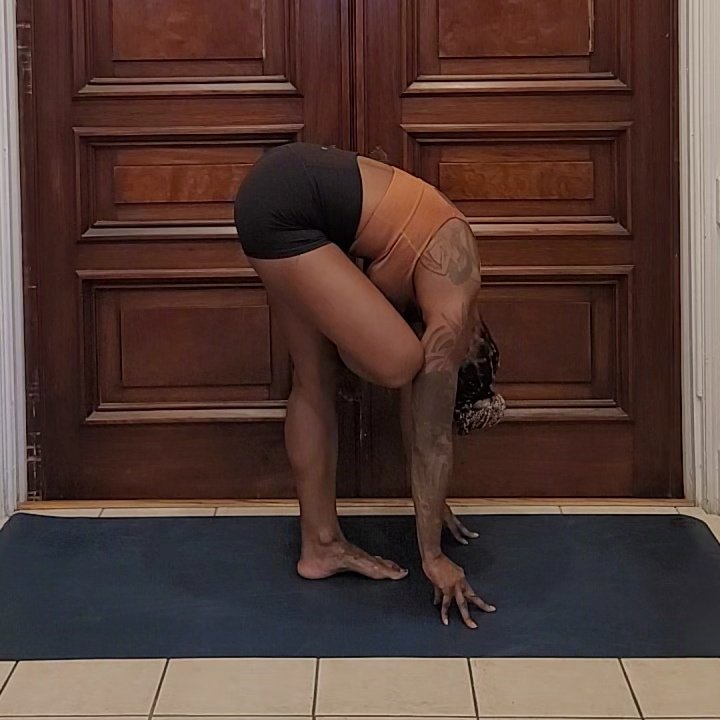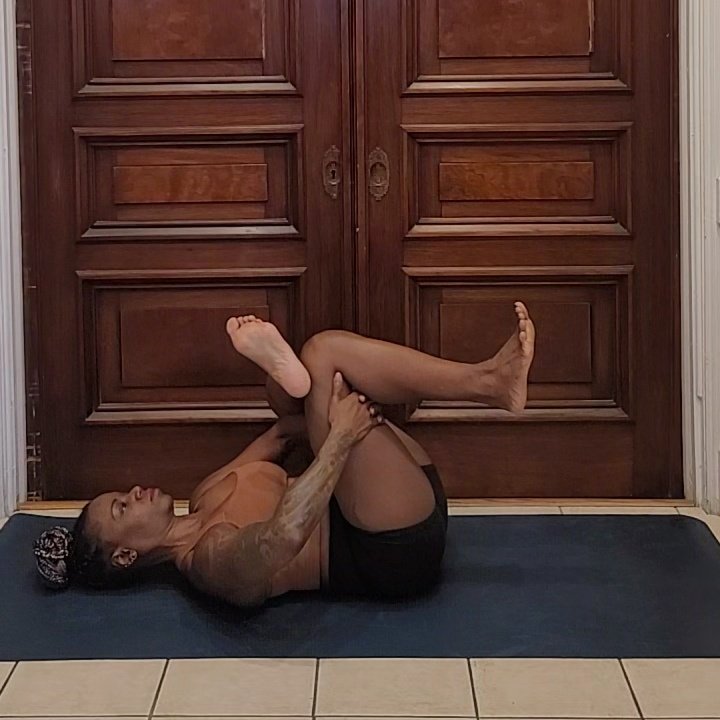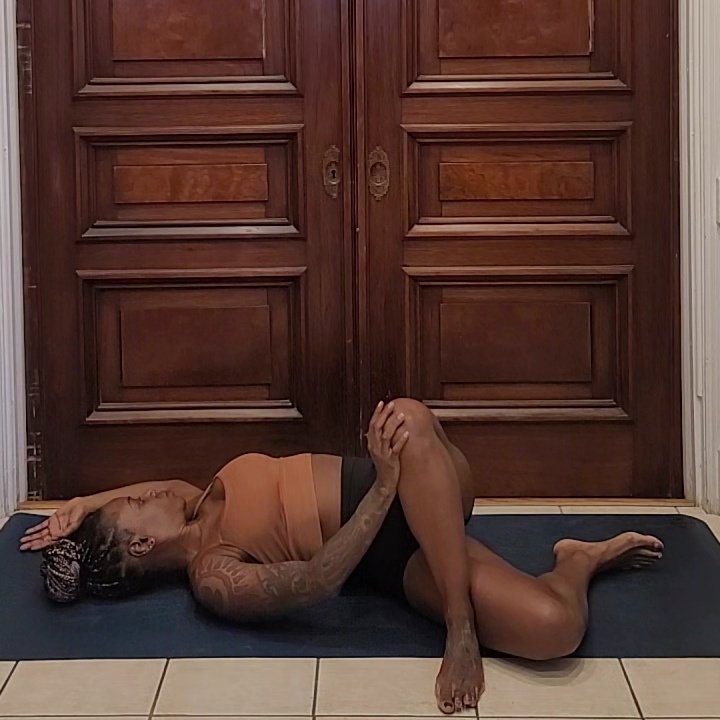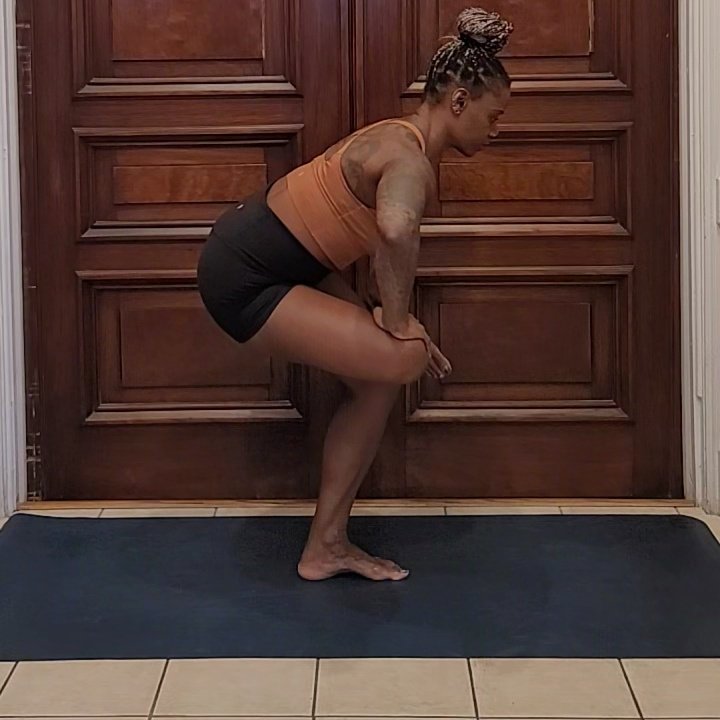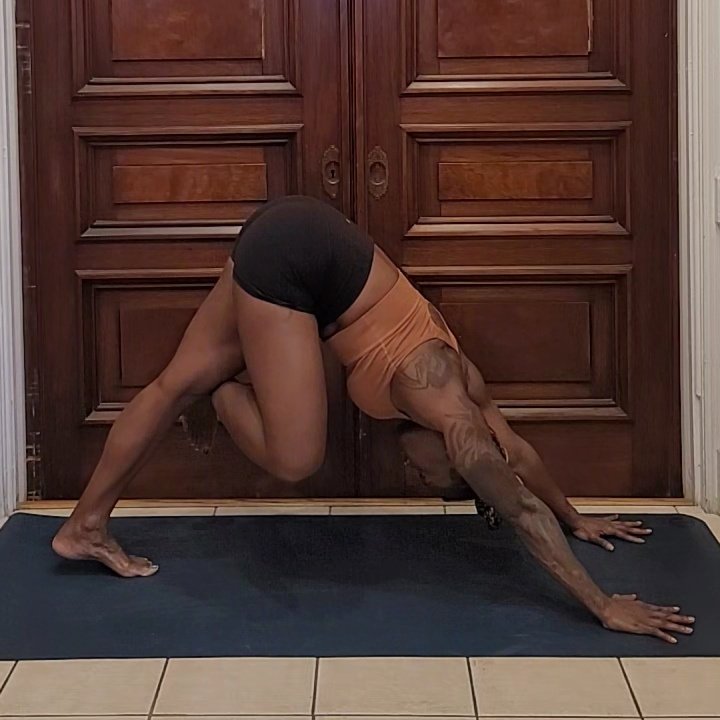Your Custom Text Here
Using Kettlebells during Pregnancy
My 16 week pregnant client mid swing
I’ve been a certified kettlebell instructor for many years and incorporate kettlebells in most training programs and with most clients. This includes using kettlebells when training pre and postnatal clients. As a pre/postnatal certified fitness trainer and a mother, I’m acutely aware of the physical changes that occur during the stages of pregnancy as well as the benefits of exercising while pregnant. I’m often asked whether it’s safe to use kettlebells during pregnancy.
While kettlebell exercises are safe to use with most populations when given proper instruction, my final answer is, depends. There is no one right answer for this question as there is a no one size fits all solution in fitness. However, having an understanding of the pregnant individual’s exercise history is a key part to how I answer. If kettlebells were used previously or up to pregnancy, then using them should not have to stop. However, at some point continued use during the pregnancy may require exercise modification, reducing weight ranges and intensity or removing certain exercises altogether due to contraindications. If the practitioner is a kettlebell novice but exercises or strength trains regularly and has a good certified kettlebell instructor guiding proper use, why not? It should be stressed that kettlebell work is a SKILL based exercise modality that needs to be learned and practiced for safety and effectiveness. Improper use of kettlebells, of which some of the core or foundation exercises are ballistic and explosive movements (swing, clean), can cause injury in done incorrectly. Pregnancy is not the time to stop physical activity (unless the doctor says so) and should be continued in a way that is beneficial to mother and fetus. Once these skills have been learned, working with kettlebells is as safe as other forms of strength training. Keep in mind, this is general advice. Being intuitive, listening to your obstetrician and using common sense should be the ultimate guide in final decision making.
Kettlebell exercises that are ballistic when performed are benefitial to the pregnant practitioner in many ways. The kettlebell, a molded cast-iron ball shaped weight with a handle, differ from standard weight training equipment like dumbbells or barbells are are used to perform exercises that are linear (straight line) such as the goblet squat and curvilinear (curved arc) demonstrated in the swing. Aside from maintaining musculature and strength, the ballistic and curvilinear action of the kettlebell swing creates dynamic strength and stability of the muscles of the spine, back, hips and legs and improves coordination. Development of the musculature of the spine and core area, specifically the core canister comprising the diaphragm, transverse abdominis, the pelvic floor muscles and the multifidus, support the uterus and strengthen muscles that aid in a natural delivery while also combating lower back arching and the associated lower back pain that develops in the later months of pregnancy. Swings also improve cardiovascular conditioning as well as maintaining mobility through the hips and lower body. And that’s just the swing!
Not all kettlebell exercises are ballistic. For instance, the turkish get up improve and develop mobility, coordination, spinal stability, balance and core strength. The goblet squat strengthens the posterior chain (back of the body) and lower body, promotes good posture and maintains functional mobility in the lower body. These abilities become compromised in the later stages of pregnancy where changes in the body due to the growing fetus can reduce mobility, balance, strength and available energy. Marches develop core/spinal stability and cardiovascular conditioning.
Pregnancy is the time to take care of your body and training while pregnant can help during pregnancy as well as with post delivery recovery. If exercising with kettlebells was a part of your lifestyle pre pregnancy, keep going. If starting a kettlebell journey, whether pregnant or not, find a certified kettlebell instructor to begin the journey. Be intuitive, follow the doctor’s recommendations and always use common sense.
Training my pregnant client.
Here’s a quick minimalist kettlebell workout.
Minimalist Workout Program: (Use your preferred weight, 1 kettlebell)
Swings - 10 reps
Goblet Squat - 10 reps
Marches - 10 pair, goblet hold
3 sets
The Figure Four Stretch and your Piriformis
The figure four is an important and often performed hip stretch for the piriformis
Standing Forward Folding Figure Four Stretch
The figure four is an important and often performed hip/glute stretch, usually as part of a series of other lower body stretches, like the ubiquitous standing quadriceps stretch where you bend at the knee and grab the foot in one hand with the opposite arm over head and the hamstring stretch where you’re leaning forward over a straight leg supported by the bent back leg while reaching for the toes (you know what I’m talking about), performed on a kind of auto pilot as one of those stretches you’re supposed to do. However, many don’t know what muscle they’re actually stretching and/or how to perform it properly. Unless you’ve been diagnosed with an ailment perpetuated by tightness in the piriformis, are a yoga practitioner or an athlete of some sort, most don’t actually understand the importance of this particular stretching exercise. Often the cause for pain, hip tightness and reduced mobility, let’s take a moment to break down the piriformis muscle, figure four stretch techniques and variations and why it’s an important stretch.
The piriformis muscle is one of the deep muscles of the hip joint whose primary job is external rotation; think standing with straight legs & feet forward then turning the feet outward like a ballet dancer. The piriformis muscle rotates the femur during the hip extension (the kick back and abducts (brings the leg toward the midline of the body) the femur (thigh bone) during flexion (Rockette kick) of the hip. Piriformis tightness or injury can come from doing too much exercise and overtraining. It is a repetitive stress issue that affects athletes like runners and cyclists. On the other hand piriformis tightness can occur from doing too little activity like sitting at a desk all day. If not managed, a tight piriformis can lead to a more severe issue, Piriformis syndrome. Piriformis syndrome is an underdiagnosed condition defined by pain and numbness in your buttocks and down the back of your leg which occurs when the piriformis muscle in the buttocks presses on the sciatic nerve.
The figure four stretch is the go to stretch to correct the issue of tightness and pain in the hips and increases mobility. To correctly perform the figure four stretch, place the ankle of the affected leg on the opposite thigh above the knee, then use your hand to gently push the knee of the affected leg away from your body holding for a few seconds then releasing. Repeat this 3-4 times. Daily.
This stretch should be performed regularly if you are an athlete or enthusiast who participates in repetitive motion physical activity of the lower body or sit for long periods of time to reduce the chances of feeling discomfort in the hip by way of the piriformis muscle.
Seated Figure Four
Forward Fold Figure Four
Reclining Figure Four
Reclining Figure Four with Spinal Twist
Standing Figure Four
Standing Forward Fold Figure Four
Figure Four in Downward Facing Dog
Reclining Figure Four with foot on the wall
